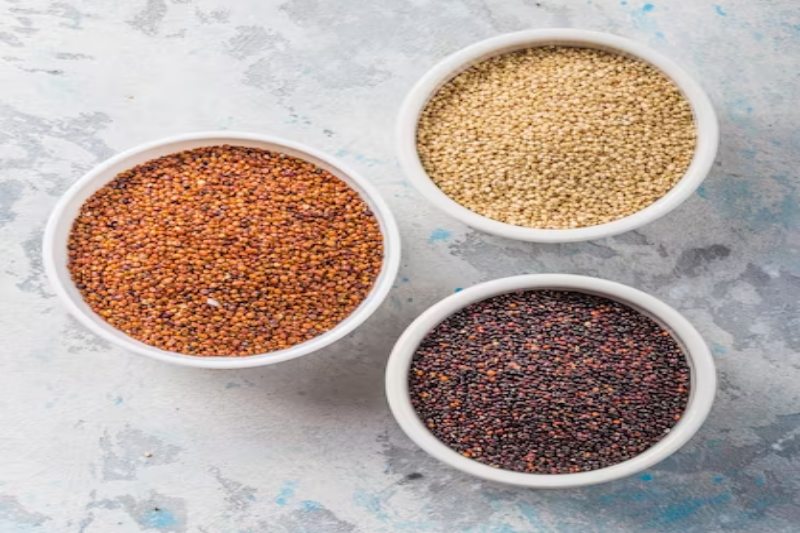The Effect of Bioactive Components in Quinoa on Intestinal Health

What is the Quinoa Plant?
Chenopodium quinoa, a wholegrain crop in the Amaranthaceae family, is commonly known as quinoa. Quinoa is a native of the Andes Mountains in South America. It comes in three types, distinguished by their color—white, black, or red.
Due to its abundance in protein, fat, vitamins, minerals, fiber, and other bioactive ingredients, quinoa is gaining popularity, particularly among people who are concerned about their health and fitness.
Recent studies in the field of nutraceuticals have revealed that the bioactive chemicals found in quinoa have the ability to modify the body’s production of short-chain fatty acids (SCFAs) and intestinal pH, two important factors that determine intestinal health. The state of the intestinal microbiota has a significant impact on the development and risk of chronic illnesses, such as cancer, neurological disorders, and cardiovascular diseases.
Gathering and analyzing data on the health and therapeutic advantages of quinoa can help future researchers, health-conscious people, and medical professionals make more informed decisions about how best to use this inexpensive, safe, and natural plant.
Concerning the Study
The current study examined 85 scholarly works assessing the nutritional value, biochemical makeup, and potency of quinoa’s bioactives in promoting intestinal health. It was also covered how different quinoa-derived saponins, polyphenolic chemicals, polysaccharides, and biopeptides contribute to better gut microbiome results.
Saponins
Triterpene glycosides, or saponins, are bitter secondary metabolites generated from plants that serve a variety of important biological roles.
Saponins produced from quinoa have low bioavailability and poor intestinal absorption, which leads to a longer intestinal residence. This may enable the gut bacteria to exploit these metabolites as a source of sustenance. This relationship has been verified by earlier rat investigations, which also demonstrate a direct correlation between increasing gut microbial diversity and supplementing with quinoa.
Studies on metabolism have shown that the saponins produced during the digestion of quinoa can change the ammonia cycle and enhance the metabolism of several vitamins. When choosing supplemental levels, care must be given nevertheless, since rat studies have demonstrated that high concentrations of saponins obtained from quinoa can be harmful.
Polyphenolics
Quinoa is rich in polyphenolic substances. For instance, red junglefowl given 1% quinoa quercetin showed lower numbers of opportunistic infections and higher numbers of the helpful bacterial phylum Firmicutes when compared to placebo. Quercetin boosted the number of goblet cells much more when quinoa-derived cellulose was added, which directly enhanced gut immunity.
Polysaccharides
The majority of polysaccharides obtained from quinoa are prebiotics that have the ability to raise the percentage of advantageous probiotic Bifidobacteria and Collinsella bacteria. Quinia polysaccharides efficiently regulate SCFA concentrations and decrease weight in high-fat diets (HFDs), which are indicative of hyperlipidemia, when combined with quinoa dietary fiber.
Peptides with Bioactivity
Quinoa proteins have been demonstrated to have a variety of interesting peptide precursors in in vivo investigations employing hypertensive rats (SHR). These precursors have been demonstrated to dramatically lower the blood pressure in SHR models, indicating their potential use in cardiovascular research even if their exact route of action is still unknown. These health advantages go beyond controlling blood pressure; according to certain research, quinoa proteins may also be useful in the prevention of colon cancer.
An extra benefit for the cardiovascular system has been discovered: quinoa proteins are a naturally occurring supply of peptides that inhibit the angiotensin-converting enzyme (ACE).
In Conclusion
Although the field’s research is still in its early stages, quinoa’s nutritional and therapeutic advantages are becoming more well recognized in the literature.
It has been demonstrated that the bioactive ingredients in quinoa increase the number of probiotic bacteria while also suppressing infections. Moreover, it has been demonstrated that bioactive chemicals generated from quinoa lower intestinal pH and boost the synthesis of SCFAs.